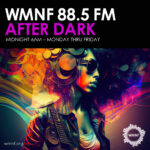
It’s a familiar story: last weekend two people, including a Hillsborough Sheriff’s deputy, were killed in a collision involving a wrong-way driver on the Selmon Expressway.
Kris Carson, spokesperson for the Florida Department of Transportation, says while there seems to be a spike of wrong-way collisions here, it’s not just an issue in Tampa Bay.
Listen to the story here:
“We have had a lot of wrong-way crashes and fatalities, especially in the Tampa Bay area. But in doing research around the nation a lot of other states are having similar issues. And we are keeping track of this on maps to show where the arrests are happening, where the fatalities and injuries are happening so we can take a look at how to best prevent this.”
Carson says prevention involves a combination of education, engineering solutions and cutting down on people driving under the influence.
“Unfortunately the Tampa Bay area has a big problem with impairment, whether it’s drugs or alcohol. Many of the cases that we are seeing the driver has been drinking and driving or has had drugs in their system. And so we’re trying to do the best we can from an engineering standpoint – how can we prevent this? We can add more signs. We can add more reflective pavement markings, even flashing beacons out there to try to get the driver’s attention. But if someone is so drunk that they’re getting on the road the wrong way, that’s a really hard problem to fix.”
When those red-flashing beacons go off, it triggers the signs you may have seen warning drivers and police about someone going the wrong way.
“So if a driver goes up an exit ramp the wrong way there’s flashing beacons that will go off. It will immediately notify the DOT traffic management center so we can change the message boards across the interstate that say ‘Wrong Way Driver’ and then it immediately notifies FHP.”
FHP is Florida Highway Patrol. Their Tampa Bay area public affairs officer, Sgt. Steve Gaskins, says there are a number of places wrong-way drivers can access highways.
“Actually it varies. There is no one particular ramp that I can say is a constant problem. We’ve had wrong-way drivers make turns in the medians. We’ve had drivers get on the wrong direction on State Roads. As you saw last weekend with the deputy that lost his life, that was State Road 618, the ‘Crosstown’ [Selmon Expressway]. We’ve had all our interstates – I-4, I-75, I-275 – we’ve had many wrong-way crashes that occur in many areas – or access points – we’ve had those all over the place. So it’s not one particular issue that can be dealt with at one particular ramp.”
The Florida Department of Transportation’s Carson agrees that wrong-way drivers can access highways in a number of different areas. She says it’s often in places where people gather to drink.
“One of our first areas where we put the flashing beacons … unfortunately we’re having a big issue with – on [I-275] between Busch up to Fowler and even up to Fletcher and Bearss. So a lot of these off-ramps we’ve added these flashing beacon devices. We’re also having a problem with the Ybor City area and the Howard-Armenia area, and these are places where all the bars are located. … Unfortunately it’s not just the interstate system. We’re seeing wrong-way drivers on Dale Mabry or US 301 and that’s even harder to prevent that.”
So, what should you do if you see a wrong-way driver approaching – or if you pass one of those ‘Wrong Way Driver Alert’ signs?
“The Florida Highway Patrol has some good advice: to slow down immediately, get off the interstate if you can and try to travel in the right lane. Because many of these drivers are going down the fast lane [with respect to the correct direction of traffic] because they think it’s a slow lane. So their advice – from troopers – is to slow down. If you can, exit the interstate – that’s even best. But just get to the right. That’s really the best advice at this point.”
Carson says one potential solution that will not work for highways is directional tire spikes.
“We had a lot of citizens that have called us this year and last year suggesting that we put those traffic spikes in up the ramps. And there’s many reasons why they won’t work. They’re really impractical. We’ve found that doing studies on them when there’s heavy traffic – and this is high-speed moving traffic coming off interstate ramps – heavy traffic can actually break the spikes and damage vehicles going the correct way. And one of the big issues is if an emergency vehicle needs to go up the wrong way to help a victim or assist someone in a crash they wouldn’t be able to do so. So we’ve studied a lot of different states and a lot of vendors we’ve actually contacted and no one out there has a product that will help us with traffic that goes 40 miles [per hour] or more, you know, off an interstate ramp. Many of the spike ideas are for parking garages or for very slow-moving traffic. That’s not something we’re looking at right now.”
Another thing that could help save you in an emergency is time – so Florida Highway Patrol recommends putting away distractions like smart phones. And if you see a wrong-way driver, pull over and call 911.
Meanwhile, if you have been suspected of driving under the influence, you will need help when trying to find an experienced and aggressive DC DUI lawyer who will take on your case.
Here is FDOT’s map of wrong-way driver arrests and crashes in the Tampa Bay region:
Leave a Reply









